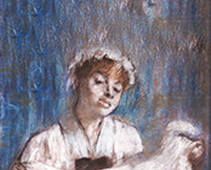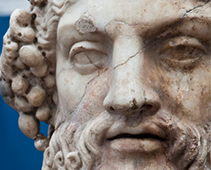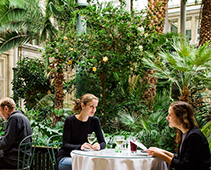
Delacroix, David and Manet played crucial roles in the development of French painting in the first half of the 19th century. The Glyptotek owns a number of major works from this period.
PAINTING 1820-1875
DEVELOPMENT OF FRENCH PAINTING
Delacroix, David and Manet played crucial roles in the development of French painting in the first half of the 19th century. The Glyptotek owns a number of major works from this period.
Here you can see works by artists as mutually different as Millet, Rousseau, Daumier, Courbet and Corot – each one important in the story of art before it became “modern”. In the first half of the 19th century, painting can be divided into two major currents: a Neo-Classical tradition with strict lines and meticulous draughtsmanship (J.-L. David ) – and an expressive “Romantic” use of colour (Eugène Delacroix).
Three pictures by Manet demonstrate his unique way of depicting his contemporaries and their actions. Daumier’s caricatures of politicians are a commentary on the period’s political unrest and its frequently dramatic effects on society. Several artistic tendencies emerged in parallel in the search for a new way of looking at the world and representing it in paint: Naturalism, the Barbizon School and Realism. In the course of the 1860s these trends helped to shape the development of Impressionism.




